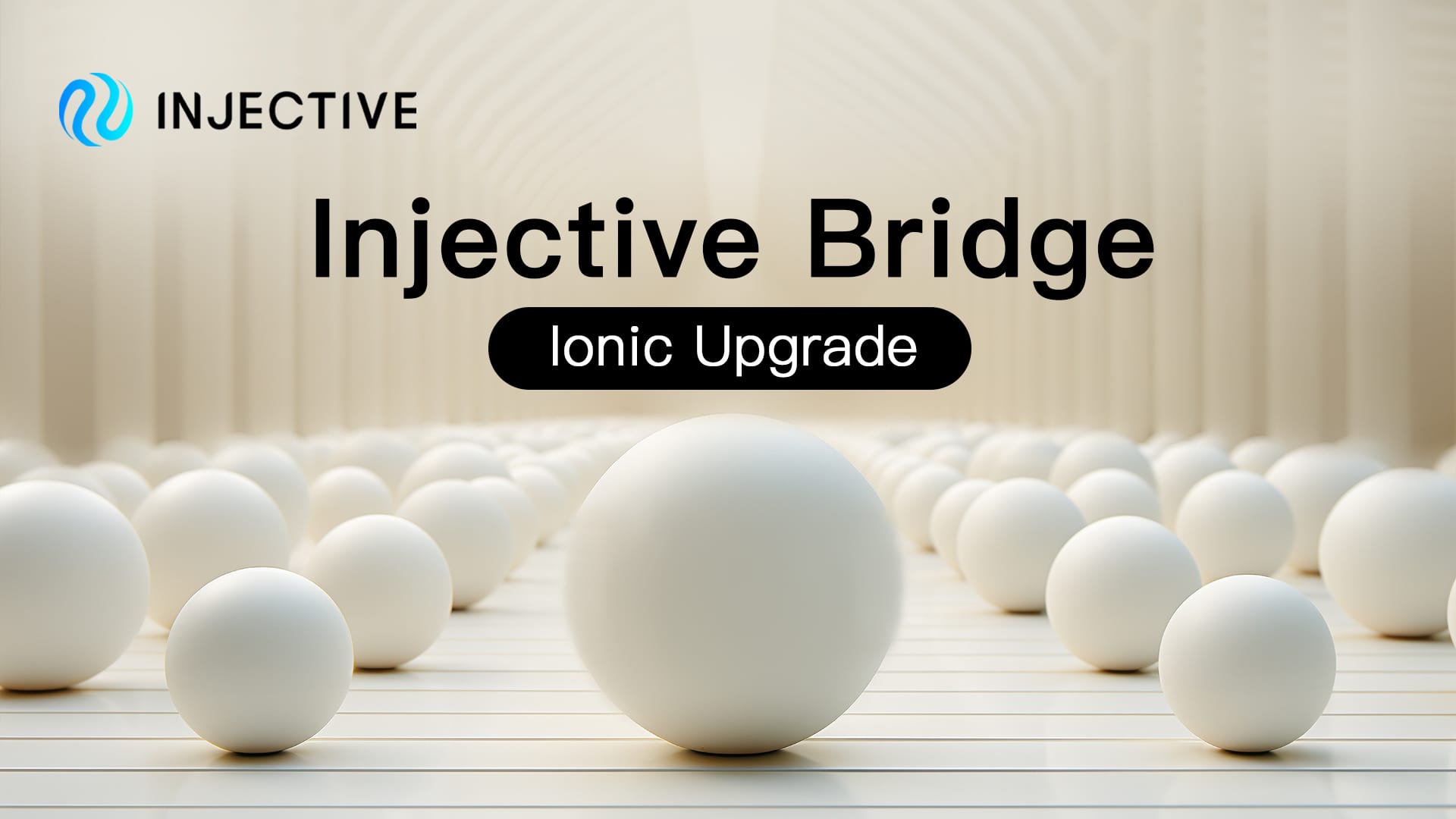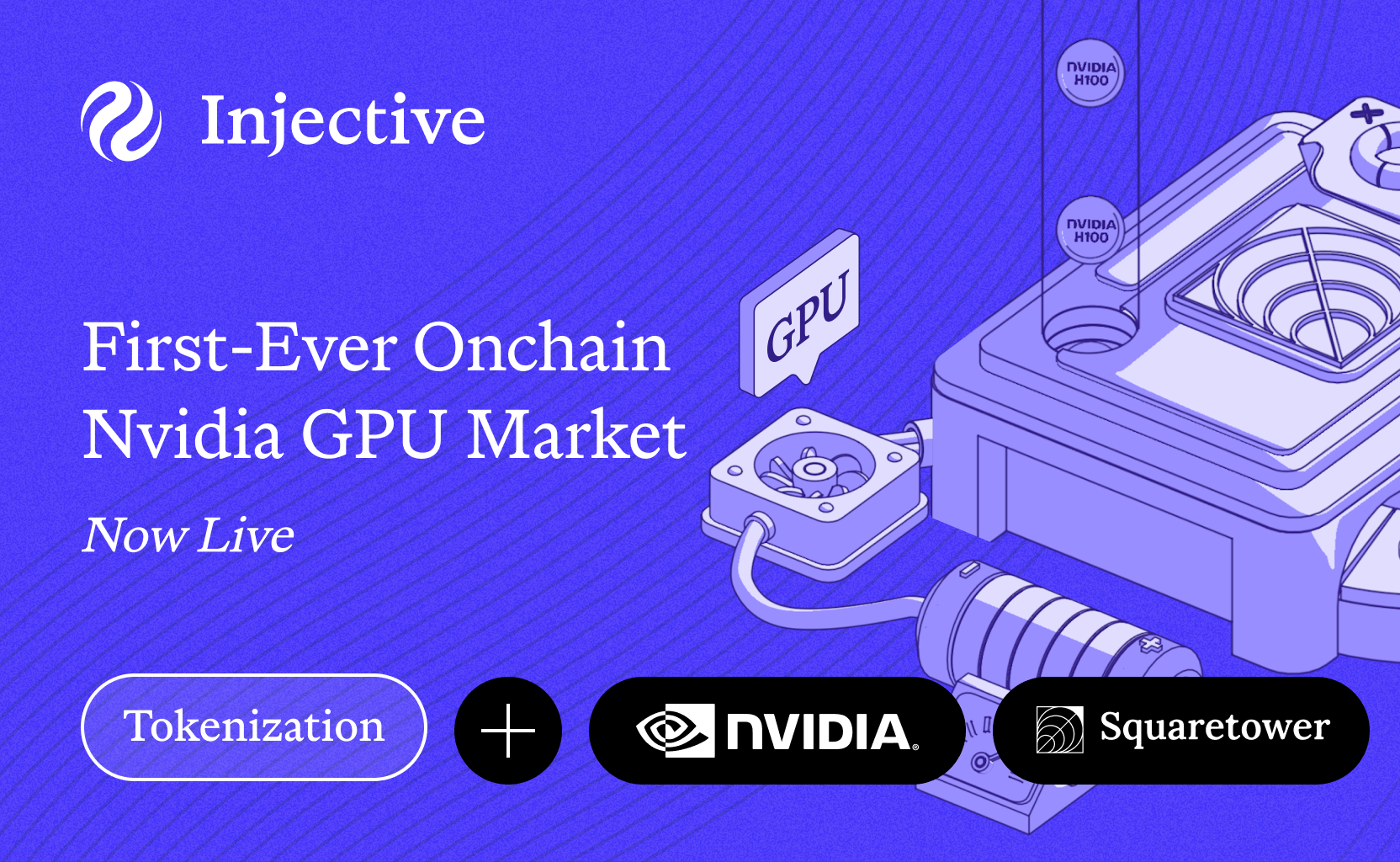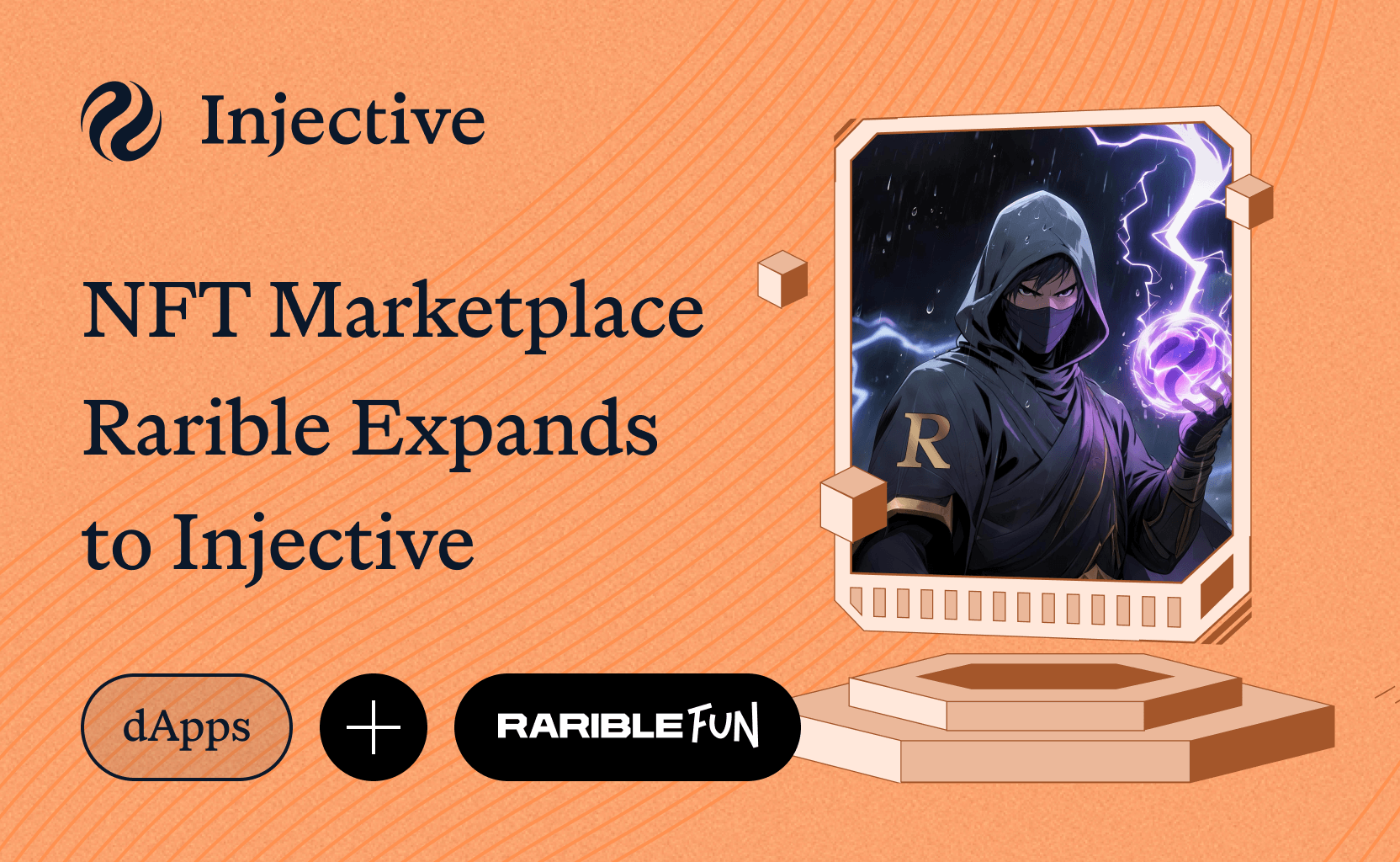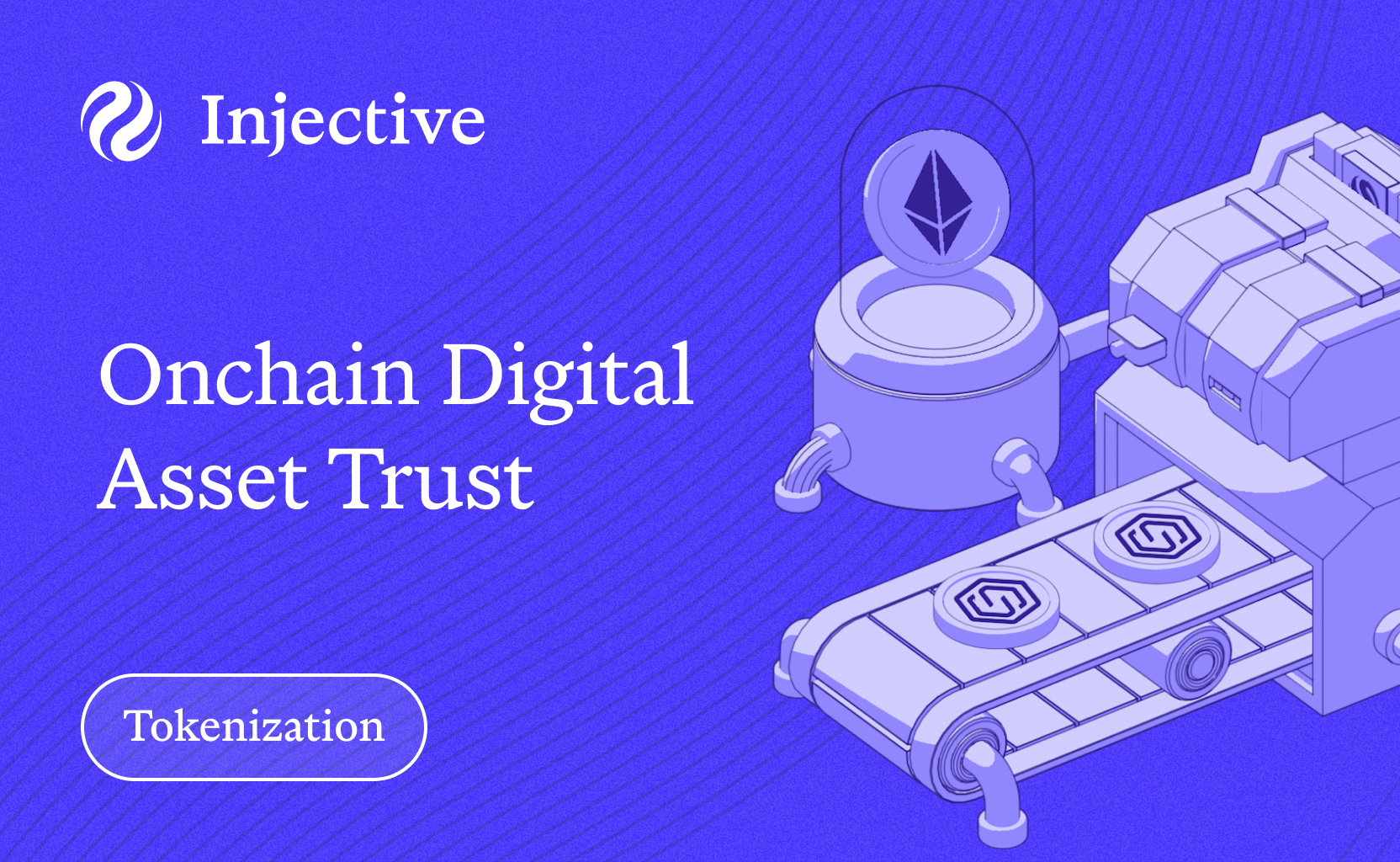Injective today is releasing the ionic upgrade to the Injective Bridge, unveiling the most advanced interoperability solution in crypto alongside a superior user experience with near zero fees.
The all new Injective Bridge will unify one click bridging across major chains including Ethereum, Solana and Cosmos. In addition, it brings a revamped UX with easy deposit functions, comprehensive transaction histories and state of the art transfer tracking mechanisms.
Background
Injective today is one of the most interoperable L1 blockchains in existence. This was achieved via strategically integrating some of the most widely utilized networks across the expansive crypto industry.
The vision for Injective's interoperability lies in its roots of creating one core hub for all of finance to thrive. To do so, it was essential to ensure that any asset stemming from distinct chains can find a home and easily onboard onto Injective.
Injective developers began by creating the Peggy bridge which tied together Ethereum with Injective itself. This would enable any ERC20 asset to be bridged onto Injective. The synergy with Ethereum itself was further heightened with the creation of an advanced signature scheme that would allow Ethereum users to sign any transaction on Injective with any EVM compatible wallet such as MetaMask.
As the ecosystem continued to grow, so did Injective's efforts towards creating routes to new chains. Injective was one of the first chains to natively adopt IBC compatibility, effectively allowing developers to seamlessly transfer data and assets. This allows any asset to seamlessly flow into Injective from any other IBC-enabled blockchain.
Last year, Injective began to make even larger strides towards interoperability when it integrated Wormhole, making it one of the first chains to do so. This also allowed Injective to interact directly with prominent blockchains such as Solana.
The Injective Bridge: Ionic Upgrade
The Ionic upgrade brings Injective to an entirely new level. Now for the first time, users and developers alike will be able to leverage one click bridging from any major chain onto Injective.
With the Ionic Upgrade, Injective users will be able to bridge any asset from the larger IBC ecosystem, bridge the latest assets via Wormhole 2.0 (without ever leaving Injective), and also continuously bridge any ERC20 token via Injective’s native Ethereum bridge (Peggy bridge). Under the hood, this is an extensive lift by developers in the Injective ecosystem who worked to tightly integrate all of the distinct interoperability frameworks into one standalone product. As a result, the complexities around bridging across individual chains are all abstracted away into one unified product built on Injective.
One Click Bridging
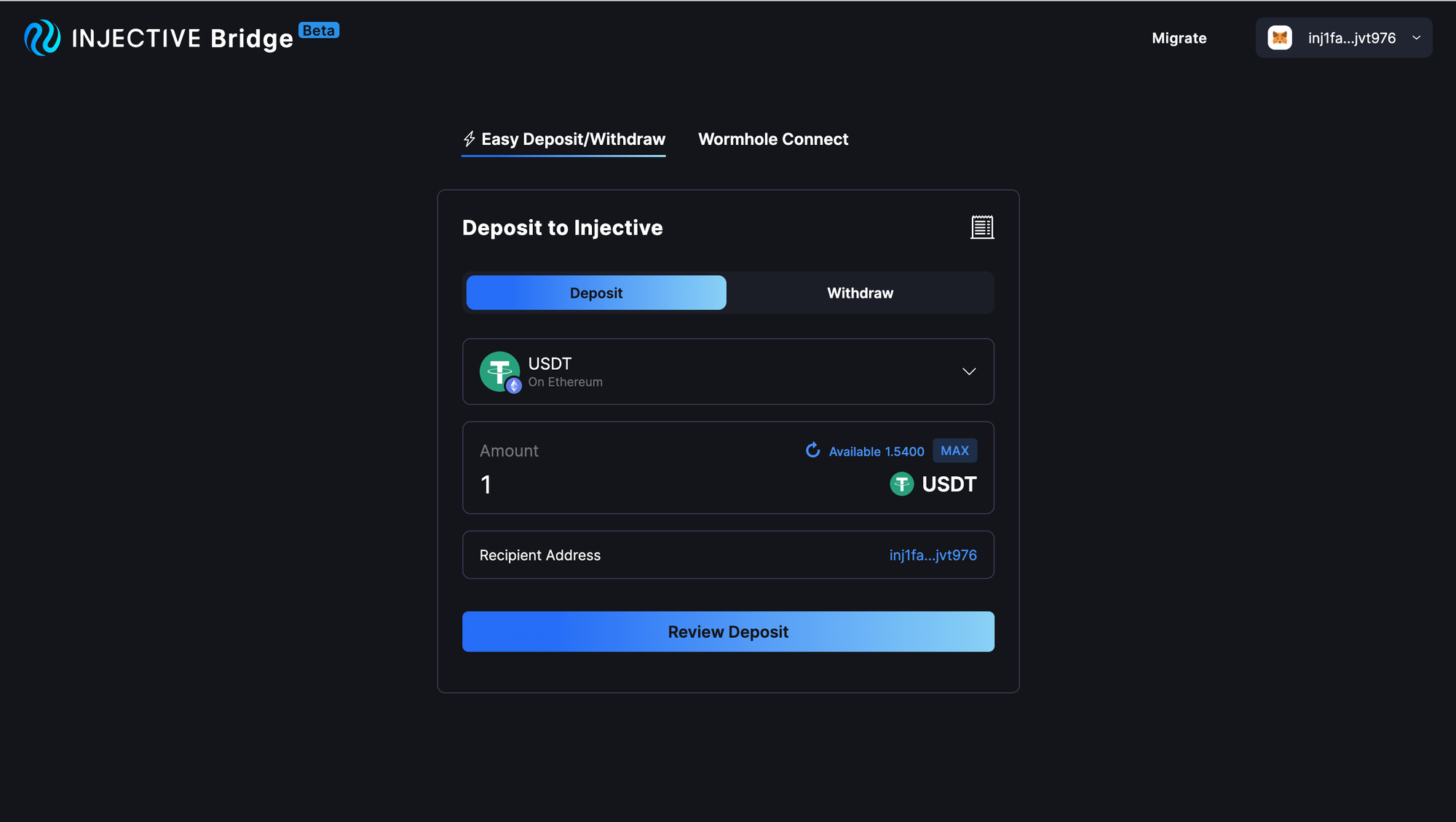
The Ionic upgrade provides everyone with an intuitive user experience that makes onboarding onto Injective easier than ever before! With only a click, you can deposit from major networks such as Ethereum, Polygon and more. Major assets such as USDT, wETH and more can also be bridged onto Injective where the user can also designate the recipient address. This provides far more flexibility than before, where anyone can choose to bridge assets onto a different wallet or network.
Seamless Chain Access
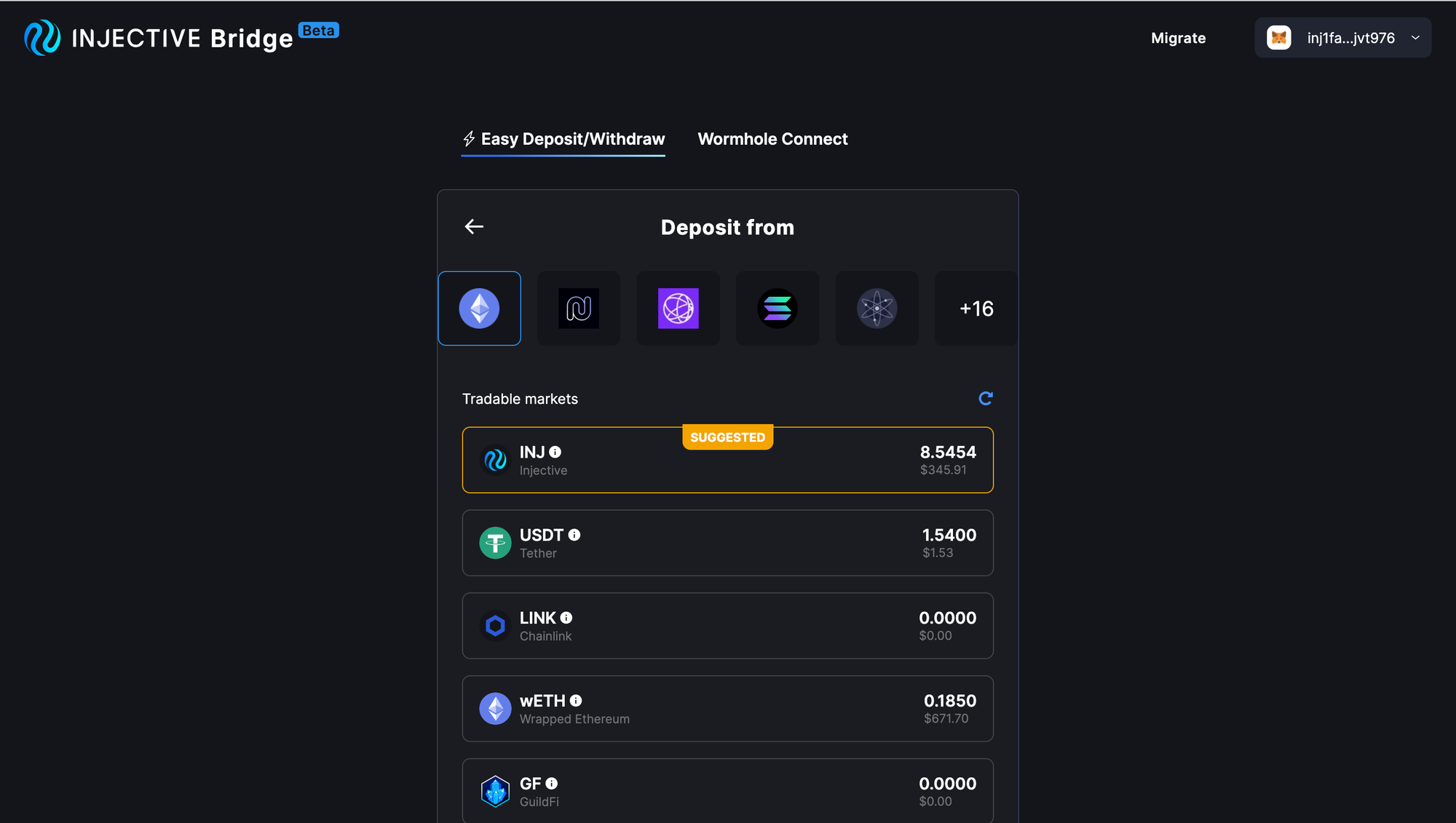
Now developers and users alike can transfer from a host of chains including EVM chains such as Ethereum, non-EVM chains such as Solana and IBC-enabled chains such as Celestia. The same deposit framework outlined above is retained, meaning that regardless of which chain or asset is selected, the entire process can be completed with just a click.
Furthermore, the balances for any asset across any chain can be viewed on the same page, allowing users to have a complete view of their holdings.
Expanded Transaction Monitoring
Every single step of the bridging process can be monitored by users at all times. The flow begins of course with the user initiating the bridge process with one click at the start. From there, the entire bridging experience is abstracted away.
If users choose to do so, they can view the transaction on the explorer for the initial chain such as Etherscan for Ethereum. In addition, once the asset appears on Injective, the Injective Explorer can be used to view the asset as well.
Users do not need to be on the bridge page after they make the initial deposit, so even if the site is closed, the bridging process will occur just the same. The new monitoring system provides everyone with further peace of mind as now assets can always be tracked through a simple UI and more detailed explorers as well.
Comprehensive Bridging History
The Ionic upgrade for the Injective Bridge also provides for the first time a detailed history of any transfer made.
The initial overview provides the exact timestamps as well so a user can always view the page at a later date. Expanding the "Completed" dropdown will also highlight the exact bridge amount, the transaction hash with an explorer link and the wallets involved in the bridging process.
Enhanced Ethereum Compatibility
Injective's compatibility with Ethereum is further highlighted by lightning fast transfer times for both deposits and withdrawals. Unlike other blockchains today where withdrawals can take up to a week, withdrawals on Injective take only minutes!
As a result, Injective today becomes the fastest chain for interacting with Ethereum and EVM native assets.
Near Zero Fees
Injective release of Gas Compression is also now integrated into the new bridging process, meaning that transactions incur the lowest fees in all of crypto! In the end, this means users are able to retain more of their funds on Injective compared to any other L1 network today.
Wormhole Gateway Integration
The Wormhole experience is also now directly embedded into the Injective Bridge for the first time. As a result, users no longer need to navigate multiple bridge providers or Portal Bridge to make their Wormhole native transfers to Injective.
Assets from chains such as Solana, Polygon, Arbitrum and more can now rapidly be deposited onto Injective. Wallets such as Phantom, Keplr and MetaMask can be utilized for the bridging experience, meaning that users can continue to use familiar wallets to onboard onto Injective.
Wormhole Migration
With the introduction of Wormhole Gateway, a paradigm shift occurred. Tokens bridged in through this upgraded mechanism are automatically designated as bank tokens, the canonical version of the asset on Injective.
Previously, tokens bridged into Injective via Wormhole were designated as CW20 tokens. While these tokens served their purpose, they lacked the seamless interoperability required for optimal performance within the Injective environment. CW20 tokens, although functional, needed to undergo a conversion process into Bank denom tokens to unlock their full potential within the ecosystem. This conversion facilitated compatibility with essential components like the on-chain Injective orderbook module and dApps across the ecosystem.
With the Ionic upgrade directly integrating Wormhole Gateway, users no longer need to manually convert bridged assets into Bank assets. This process now occurs automatically with the new upgrade, significantly enhancing the seamlessness and efficiency of bridging for end-users. As a result, when users bridge a new asset or wish to quickly create markets for tokens, they can do so without any hassle or in-depth technical knowledge about distinct token denominations.
Wormhole Legacy Assets
Starting now, Injective users are encouraged to transition their existing "legacy" tokens to the new Wormhole Gateway standard through the revamped Injective Bridge.
For users with tokens previously bridged into Injective via Wormhole, a "LEGACY" suffix will be assigned. Migrating legacy tokens to the one unified token standard can also be achieved in one click using the Injective Bridge! The Injective bridge provides a user-friendly interface for this migration process, ensuring a smooth transition without compromising on security or efficiency.
Migrating to one standard will ensure far more composability for assets and new use cases as a whole as dApps across the Injective ecosystem begin to follow one standard.
A New Era of Interoperability
The introduction of the Ionic upgrade to the Injective Bridge represents a major milestone in the evolution of Web3 infrastructure as a whole.
For the first time, anyone can effortlessly deposit assets onto Injective from a host of different networks in one unified product, opening up a world of possibilities for Web3 finance enthusiasts and developers alike. One click deposits, enhanced transaction monitoring, and major optimizations across the infrastructure stack alongside the lowest fees in all of crypto, enable Injective to truly provide the best bridging experience to date. In turn, this allows for far higher levels of composability than what was previously thought to be possible.
By embracing enhanced token standards and prioritizing interoperability, Injective continues to empower users with unparalleled flexibility and efficiency in their digital asset transactions.
About Injective
Injective is a lightning fast interoperable layer one blockchain optimized for building the premier Web3 finance applications. Injective provides developers with powerful plug-and-play modules for creating unmatched dApps. INJ is the native asset that powers Injective and its rapidly growing ecosystem. Injective is incubated by Binance and is backed by prominent investors such as Jump Crypto, Pantera and Mark Cuban.
Website | Telegram | Discord | Blog | Twitter | Learn | Youtube | Facebook|LinkedIn | Reddit | Instagram | Orbit Newsletter
